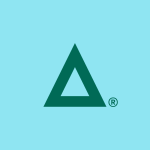We mainly use UiPath for automation testing processes. I am from delivery and project management, and I have a team member under me who is developing automation processes for me.
We had five members on our team when we started in 2019, and now we have 70 people in-house. We have achieved a very good scale in the last five years. We started with UiPath, and we have started adding other tools over the last one and a half years. Till mid-2023, we were just on the UiPath platform, but now we've expanded to other tools. We are the only organization across the globe that has achieved certifications in Document Understanding.
The most valuable features of UiPath are test automation, test suite, test manager, and document understanding.
Communication mining and process mining can be enhanced in UiPath. UiPath should improve its licensing because its competitors offer a cheaper and more sustainable model for even small-scale industries. Any company that wants to adopt UiPath has to pay straight away and then use it.
I have been using UiPath since 2015.
We haven't faced any issues with the stability of the solution because it is continuously evolving and upgrading. In some instances, we found that some solutions we had built in the past were failing, but that could be quickly fixed with their suggestions.
I don't feel any other tool has that much accuracy and stability of the applications. UiPath is a very scalable solution, and we can integrate it with any other application.
I rate the solution’s scalability an eight to nine out of ten.
UiPath's support team has to improve a little because their responses regarding production incidents are not too quick. Initially, they try to resolve issues by email and connect on a call if that doesn't work. I think they have to improve a lot in this area. I rate the solution’s technical support a six or seven out of ten.
In my previous organizations, I used Robot Framework and Power Automate.
The initial deployment of UiPath is easy.
We have several in-house experts who can deploy the solution. If we struggle with something, we seek the help of all the resources in our team. Mostly, we don't take any external help for deployment. If required, we reach out to UiPath for something that is missing or not working. However, that is just 2% to 3% of the complete processes. We manage the rest, 98% of the process, among ourselves.
Compared to other RPA tools, UiPath is a much more expensive solution.
UiPath's implementation depends on the process and budgeting. If clients have a good budget, we proceed with UiPath. Otherwise, we suggest some other solutions. Sometimes, we need to minimize the time frame to do the repetitive task. Manually, people take a longer time to process any files. We are automating the processes to streamline them and minimize the team members' costs and efforts.
If we have multiple tools involved, we have to put a lot of effort into analyzing them. If we directly go to development without thinking or analyzing, we lose time and effort. That's why it is very important to analyze the tools in depth. If the processes are straightforward, we suggest some improvements, which would be much easier. If multiple applications are involved, it takes a longer time. The complex process also requires some improvement, and based on that, we suggest whether to go ahead with UiPath or not.
The solution enables us to implement end-to-end automation for 90% of the processes. End-to-end automation is always important for us because it creates business for us. When we implement UiPath for the client, each client will be satisfied and happy with us, and we can get more business.
UiPath's user community is very helpful. We learn about different technologies and aspects when we get involved with the user community. Sometimes, we interact with problems that we have never worked on. We learn about such challenges and their solutions because of the solution's user community.
If you are struggling somewhere, you can post the issue on the user community forums and get an immediate response. With UiPath support, we have to wait for 24 hours to get a resolution. We get quick responses in community forums because experts respond to us. Compared to other solutions, UiPath's community forum is much stronger.
Most of our resources are first going ahead with UiPath Academy courses. After that, we give training because that is a basic point to start with. We are even onboarding the freshers. We ask them to go through their Academy courses, and after that, we allocate an in-house mentor. It will be much easier for us after they have an outline in their mind regarding the processes they have to go through. Once they finish it, we have an internal assessment and a training team that will assist in complex use cases.
The biggest benefit of UiPath Academy is its proper outline and structure in terms of education. Anyone who can follow will at least get 40% to 50% of the learning from there. After that, they will learn a lot based on their practices. They can practice some examples from there if the basic concept is clear. The courses are structured in such a way that even kids can also start with them. The courses in UiPath Academy are well structured and planned.
We cannot add the solution's AI functionality for every project. Around 50% of the projects we have done so far are related to AI. AI is helping a lot in terms of AI Center. The AI functionality helps connect with each application and for documenting. The solution’s AI functionality has enabled us to automate more processes overall.
Other than licensing costs, the solution reduces the cost of digital transformation. Our complete business depends on UiPath. As a solution-based company, we are automating the processes. We don't have manual resources except the project manager and business analyst to analyze the processes. Our complete business depends on the solution's automation or the AI model.
UiPath has freed up employee time for us. We have delivered two projects to a European-based client. UiPath has freed 90% of employee time in one of the processes and 85% in the other. It was a very big logistic company where we implemented UiPath using a Document Understanding to extract all invoices and feed them into the application. Earlier, they used to allocate these tasks to nine resources. Now, one resource can handle everything.
We have been expanding into other tools for the last year, but UiPath has been beneficial and has saved us overall costs. We don't have any licenses with us. We just provide the solution. We deploy UiPath on-premises or on the cloud, depending on the end user's requirement.
UiPath is usually deployed across multiple locations and departments. Maintenance will be required for UiPath in terms of new functionality during upgrades. I would recommend the solution to other users.
We always suggest to every client and whoever reaches out to us not to proceed with UiPath without having proper knowledge. We say this because of the licensing cost and several factors involved. If the processes are just one time, it's not recommended to use them. Overall, the learning is good. If anyone wants to try UiPath, they should first explore smaller processes and then proceed to the bigger ones.
Whenever new upgrades are available, sometimes they break the functionality, which we have faced a few times. If you are using version 12, stick with that and disable the updates directly from UiPath. First, try on the smaller instances, then proceed with the bigger ones. Otherwise, some production activity might fail.
Overall, I rate the solution an eight out of ten.






















